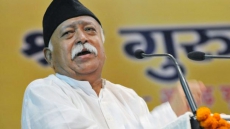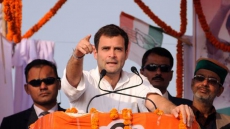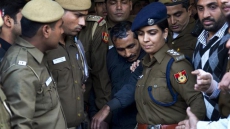Railway Minister Suresh Prabhu is set to present his maiden budget for the department Thursday amid expectations of a clear roadmap to re-energise one of the largest railroad networks in the world that's been floundering in recent decades due to a mix of political populism, lack of vision and funds crunch.
The latest railway budget evokes particular interest as it comes six months after Prime Minister Narendra Modi's government allowed 100 percent foreign equity in some big-ticket projects of the railways, promising it to be a game-changer for the 162-year-old network, that transports goods and passengers with an eye on social obligations.
Yet, one aspect of the budget is a foregone conclusion - there will be no lowering of fares. "It won't be done. Fares are already low and government is giving subsidy," Minister of State for Railways Manoj Sinha said a week ago, echoing what his senior minister has been maintaining all along.
An across-the-board hike has also been ruled out by some senior officials, given the near 15-percent increase in passenger fares and 6.5 percent in freight last year. So it will be interesting to watch how the railway minister proposes to raise money, given the limitations of market borrowings.
Railway Minister Suresh Prabhu has also rejected the idea of a reduction in passenger fares consequent to the lowering of diesel prices following the steep decline in international crude oil rates.
Falling oil prices have saved billions of dollars in subsidy spending, but Finance Minister Arun Jaitley is under pressure to prevent the fiscal deficit from crossing the target of 3.6 percent of the gross domestic product (GDP).
Prabhu, a chartered-accountant-turned politician -- handpicked by Modi to oversee the only ministry, other than finance, to present a separate budget -- is also expected to chart the path for his political boss's pet projects, notably bullet trains, dedicated freight corridors, as also foreign and domestic private equity participation.
A vision statement on utilisation of surplus land with Indian Railways is also much anticipated.
The latest rail budget comes at a time when its finances and efficiency are, perhaps, at their worst - as measured by a common parameter, the operating ratio. It suggests how much money is spent on day-to-day operations to earn the revenues, giving an indication of the funds left for safety and expansion.
This ratio for Indian Railways declined to an unsustainable level of over 95 percent in 2010-11 from around 80 percent in the 1950s. Globally, a figure of 75-80 percent or lower is what is seen as a healthy benchmark, but India ranks among the worst networks on this count.
One reason behind this is the successive changes in the political oversight of Rail Bhavan. The headquarters of Indian Railways has seen as many as seven ministers overseeing its operations in six years - Lalu Prasad, Mamata Banerjee, Dinesh Trivedi, Pawan Kumar Bansal, M. Mallikarjuna Kharge, D.V. Sadananda Gowda and now Prabhu.
A recent survey by an independent market research organisation also suggests that 74 percent of the people polled wanted better services, as opposed to more trains, and an overwhelming 78 percent were dissatisfied with the level of cleanliness, despite the Swachh Bharat Abhiyan, or the clean India drive.
For the record, India boasts one of the oldest and the largest railroad networks in the world, ferrying some 23 million people, or a population the size of Australia, as also 2.65 million tonnes of goods on its coaches each day.
It serves from 7,172 stations via 12,617 passenger and 7,421 freight trains on a network stretching from Baramulla in the Himalayan foothills in Jammu and Kashmir to the southern tip of Kanyakumari in Tamil Nadu, and from Naharlagun in Arunachal Pradesh to the port town of Okha in Gujarat, just above Dwarka, through some difficult terrain.
A day ahead of the railway budget, stocks of companies associated with the transporter turned volatile in Wednesday's trade.
At the Bombay Stock Exchange (BSE), shares of wagon-maker Texmaco Rail and Engineering closed 2.90 percent down at Rs.139.20 from its previous close of Rs.143.35. Titagarh Wagons declined, ending 6.19 percent down at Rs.579.20 from its previous close of Rs.617.40.
Hoping for enhanced budgetary support for the railways from the finance ministry, international accounting firm KPMG said in a statement here that "it is expected that there would be limited announcements of new projects and a focus on financing and completing existing sanctioned projects".
"In the light of the limited ability of Indian Railways to generate surplus funds for investment in projects, it is expected that the upcoming railway budget will focus on methods for generating additional funds," said Rajaji Meshram, director, Transport Sector, KPMG in India.
"It is expected that there would be an emphasis on increasing private sector investment through PPP route," he added.




